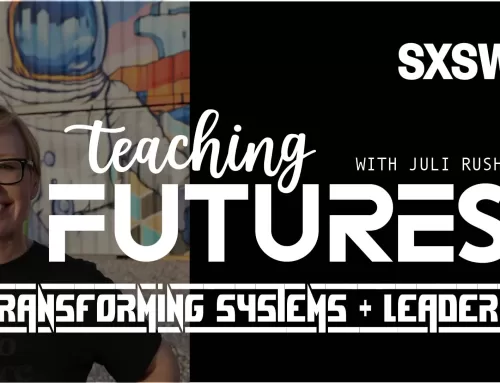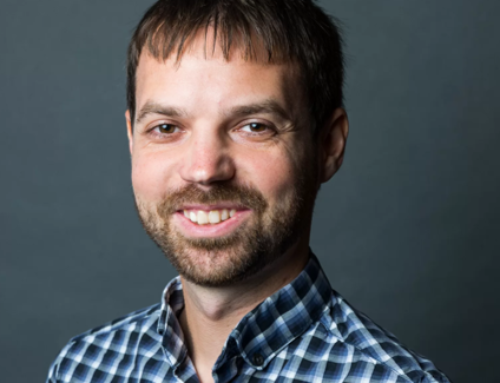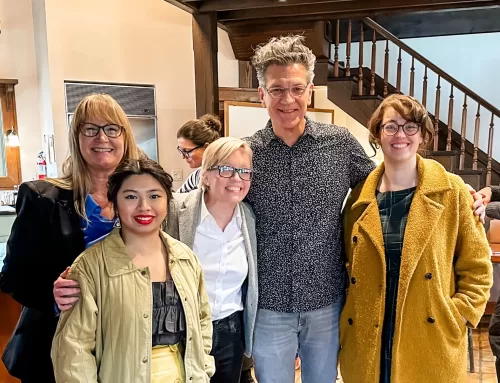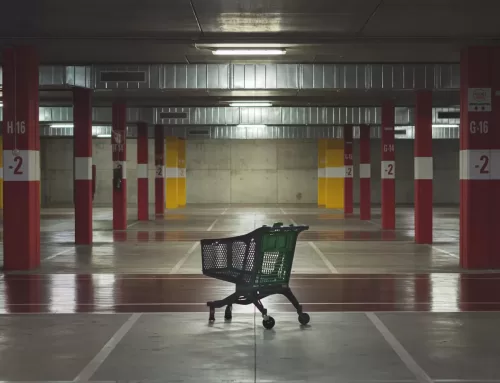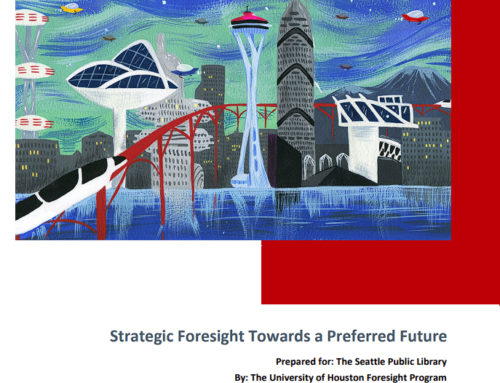Contributor: Lavonne Leong
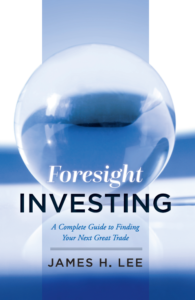 Jim Lee graduated from the Houston Foresight program in 2007. He is one of many futurists who arrived at Houston mid-career in a different field, and added a futures capability to his existing body of expertise. Lee, who is a frequent keynote speaker on trends and cycles, and has been quoted by The Wall Street Journal and U.S. News and World Report, is the founder of StratFI, a boutique investment firm with a strategic foresight advantage. He is the author of Resilience and the Future of Everyday Life (2012), and his new book, Foresight Investing: A Complete Guide to Finding Your Next Great Trade, was released in March 2021.
Jim Lee graduated from the Houston Foresight program in 2007. He is one of many futurists who arrived at Houston mid-career in a different field, and added a futures capability to his existing body of expertise. Lee, who is a frequent keynote speaker on trends and cycles, and has been quoted by The Wall Street Journal and U.S. News and World Report, is the founder of StratFI, a boutique investment firm with a strategic foresight advantage. He is the author of Resilience and the Future of Everyday Life (2012), and his new book, Foresight Investing: A Complete Guide to Finding Your Next Great Trade, was released in March 2021.
[For more on Jim’s latest book, check out our last post here]
**
Tell us a bit about your book.
Foresight Investing was my COVID project. It’s been in the works for about five years, but the idea came well before that, when I was a graduate student at the University of Houston. I proposed to my professor, Dr. [Peter] Bishop, that there was a way of integrating foresight into the whole investment process. He thought that I had something, and encouraged me to develop it further.
Between then and now, what happened?
At the time, I was working in a family office. I managed money for the DuPont family here in Wilmington, and did so in a very conventional manner, working with a lot of trust accounts. But I was always very intrigued with this idea of futures and foresight, and figuring out ‘What happens next?’ It took a corporate reorganization for me to get kicked out of the nest, so to speak, and fly on my own.
At that point, I really wanted to explore what it would look like if a futurist ran a money management firm. The whole idea is: If you want to be in the right place at the right time, it’s helpful to show up a little early. I try to look for some of these emerging ideas while they still seem a little crazy, and then figure out a reasonable way to get my clients to participate in some of these trends.
How do you convince a client that you can see farther than most?
It’s interesting. When I tell people that I’m a futurist, I thought that would just be an amazing conversation starter. This is really interesting stuff! Sometimes people look at me with a little bit of confusion, like, ‘What is that, and how does that work? Is this for real, or not?’ Or they may have expectations of me being able to do things that I simply can’t do. But I use my training as a futurist as just another layer, in terms of some of these opportunities and investments that I do. My training formally is in finance. I’m a chartered financial analyst, a certified financial planner, market technician, the alphabet soup. What I’m finding is that foresight gives you insight into the really big opportunities over the next ten or twenty years.
What’s the most recent instance where it really worked out for you?
For me, it was cryptocurrency. I’ve been tracking it since 2016, 2017. I knew about it as early as 2010, 2011, when it just came out, but it’s a trend that’s still pretty early. Not everyone is comfortable with it, it’s definitely still kind of the Wild West in Cryptoland. But that insight alone paid for the cost of tuition at UH a hundredfold. That was huge.
If you’re looking ten or twenty years out, is there a point to get in that’s too early?
That’s a great question. I’ve found out, it’s good to show up a few minutes early, but if you’re going to the party and you’re the only one there, and you’re an hour ahead of time, it’s no fun. It’s lonely being by yourself. And your money could be working harder for you in the meantime until other people start to show up.
The way I look at that, is there are three different layers. The foresight layer is the big picture over the next ten to twenty years. The next layer is sentiment, which is how people feel about things. I use something called technical analysis to see if other people have figured it out yet, that something is happening. And then I use a third layer of analysis, which is looking at the financials of a company to see if it’s real or not—to see if this trend is legit, to see if people are making money, to see if they’re growing revenues, to see if they’re well-managed. That’s the old-fashioned part. That’s just old-school financial analysis.
Is cryptocurrency “real”?
Oh, it’s real—and it’s transformative, too. If you think about what happens next beyond the whole bitcoin thing—people are a little hyperfocused on bitcoin, when it’s not the endgame. It’s not where this thing is going; [bitcoin is] just the very beginning. So if you look at what happens with programmable money, or what happens when you have smart contracts, in a way that legal agreements can be written as self-executing software code, I think that’s fascinating—this whole mashup that’s happening between finance and law and software. And it’s all happening right now in crypto, and more specifically in this area called de-fi, or decentralized finance.
That’s where finance moves away from governments?
Altogether. And [governments] lose control over a portion of the monetary system. I don’t know whether central banks are going to resist this, or if they’re going to embrace it. China is experimenting with their own government-based cryptocurrency or digital currency. Something they’re exploring which I thought was fascinating is they’re looking at programming an expiration date on money, so you have to spend it by a certain date, or else it goes stale or just disappears. It’s this whole new level of controlling money. If you want to stimulate the economy, telling people that their money has to be used by a certain date or else it just goes away—that’s a totally new control function that’s never been done before. It’s like a coupon that just goes bad. [Maybe they will] tie it to some of their social point networks in terms of whether you’re a good citizen or not. There are a lot of experiments going on here, and we get to watch and see what happens.
Tell me a little bit about how cycles play into your finance thinking.
I follow a lot of cycles because they help me to understand timing. As my friend John Smart [president of the Acceleration Studies Foundation] likes to say, ‘A trend is a trend until it ends or it bends.’ Cycles help you understand when trends end or when they bend. You can get really super specific about timing if you have that tool in your belt.
Trends do work, and I use them quite a bit. The one that I write about in my book is what I call the Values and Expressions Cycle, which for me is the really big trend that we all live within. It’s the cycle that helps me understand social change. The way to look at this is, to imagine a fabric that connects all of us, a social fabric, and that fabric stretches over time with economic growth. That growth creates stress in the fabric, eventually causing it to tear, and then you have a period of reform which involves stitching that fabric back together. When you stitch that fabric back together, it shrinks, but it comes back stronger than it was before.
So this cycle of growth and reform is 20 years of growth, then roughly 20 years of reform. I kind of feel like we’ve finished up a reform cycle, where we’ve shed a lot of light in a lot of dark places, and we’re figuring out a lot of things that need to be fixed in terms of how we relate to each other. The next decade or two could be a confidence builder—where we rebuild our confidence in institutions, and each other. And that would be growth.
There’s so much negativity [right now], but that’s what happens at the bottom. Everything looks pretty bleak, and it doesn’t look like it’s going to get better, but I think it’s going to get better.
Tell us about your time at Houston, and how you decided to do the degree in the first place.
I was about thirty at the time, and I was looking to figure out what was going to happen next with my own education, and I ran into an old classmate of mine, Christian Crews, from [the College of] William & Mary—I have my undergraduate degree in economics. We were standing for a class reunion photo, and I asked him what he did, and he said, “I’m a futurist.” I thought that was just the coolest thing: Let’s do that! How does that work? Where did you learn how to do that? He told me about the program [at the University of Houston].
What were your takeaways from the Houston program?
That there is no such thing as the future. It’s not singular, it’s a plural. And depending upon the type of future you’re looking at, you’re going to use a different set of tools. If you’re looking at possible futures, you’ve got scenarios. If you’ve got probable futures—that’s where I hang out—it’s going to be trends and forecasting. If you’re looking at preferred futures, it’s going to be visioning and strategic planning. It’s all in there, and depending upon what you want to explore, there’s a best way of looking at that type of future.
Where do you think the foresight field might be going?
There are a lot of things going on with data science and data visualization that we can learn from, as futurists. We’ve always been pretty strong qualitatively, as a profession, but how do you quantify it? For example, there are some things I can do for investments on quantitative linguistics, that is being able to scan through corporate reports to see how management is feeling versus the analysts. Or being able to go through all the Twitter feeds, see what everyone says about a certain company or a certain trend, and see whether sentiment is getting better, or see where sentiment is getting worse, in anticipation of earnings reports. The early signals are fascinating, and there’s a lot of opportunity there.
About Lavonne Leong
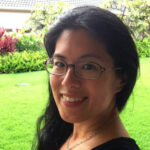 Lavonne Leong is a master’s candidate in the University of Houston Foresight program, and an associate editor at the academic journal World Futures Review. She has a doctorate in English Language and Literature from Oxford University, and lives in British Columbia with her family.
Lavonne Leong is a master’s candidate in the University of Houston Foresight program, and an associate editor at the academic journal World Futures Review. She has a doctorate in English Language and Literature from Oxford University, and lives in British Columbia with her family.
